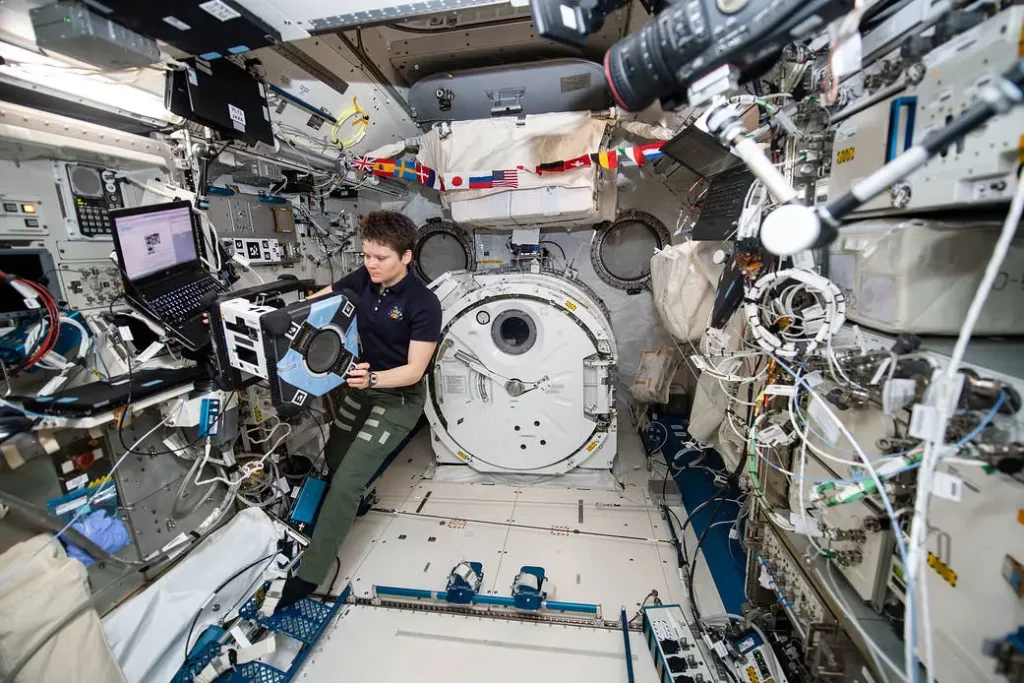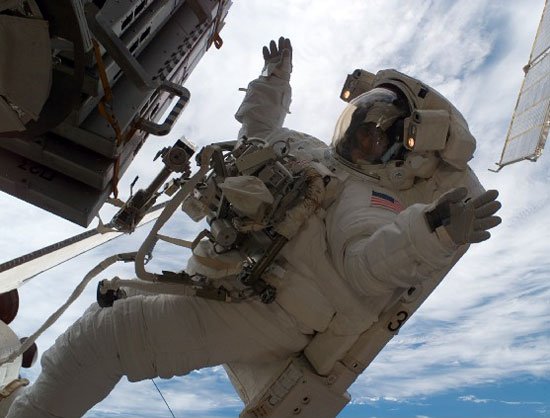Space, despite its appearance of emptiness, presents extreme conditions such as high temperatures, background radiation, micrometeoroids, and the unfiltered glare of the sun. Materials and equipment on the outer surface of the ISS are exposed to atomic oxygen (AO) and other charged particles as it orbits the Earth at the edge of the atmosphere.
MISSE-FF A Platform for Space Exposure Studies

Operated by Aegis Aerospace, the MISSE-FF stands as a cutting-edge platform meticulously crafted for conducting extensive exposure studies aboard the (ISS). Mark Shumbera, a key figure in Aegis Aero, underscores the paramount importance of comprehensively studying the combined effects of diverse space conditions. This unique capability is exclusively achievable in the dynamic and challenging environment of orbit. The ISS National Lab sponsors these groundbreaking missions to the MISSE-FF, orchestrating launches at intervals of approximately every six months.
Research Objectives and Technology Testing
Scientists leverage the state-of-the-art MISSE-FF platform to delve into the intricate dynamics of how emerging technologies respond to the unforgiving conditions of ISS. Equipped with high-definition cameras, MISSE-FF adeptly captures periodic images of the items exposed to the harsh cosmic environment. Simultaneously, a network of sensors diligently records crucial environmental conditions. The culmination of this rigorous experimentation is the return of materials and samples to Earth, paving the way for meticulous postflight analysis. This comprehensive approach allows researchers to unravel the nuanced interactions between novel technologies and the rigors of outer.
MISSE-9 and Environmental Degradation Effects

he MISSE-9 mission played a pivotal role in evaluating the resilience of polymers, composites, and coatings when subjected to the challenging conditions of outer ISS. Spearheaded by Kim de Groh, a distinguished researcher from NASA’s Glenn Research Center, the mission focused on a thorough assessment of environmental degradation effects. One of the critical aspects scrutinized was the erosion of materials due to interaction with atomic oxygen (AO), a prevalent element in the space environment.Kim de Groh’s meticulous testing procedures involve measuring the rate of material erosion caused by the interaction with AO. This invaluable data becomes a cornerstone in the arsenal of spacecraft designers, aiding them in crucial decision-making processes. Insights gleaned from these tests are instrumental in determining the suitability of specific materials for ISS applications and establishing the optimal thickness required to withstand the harsh conditions prevailing in the cosmic environment.insulation materials can become brittle in due to radiation and temperature cycling, leading to problems such as cracks and overheating.Researchers, including de Groh, test the durability of different materials to find those that resist becoming brittle.
ESA’s EXPOSE-R-2 FacilityEuropean ISSAgency’s EXPOSE-R-2 facility offers scientists another platform to test samples in .Investigations, such as BOSS and BIOMEX, expose biofilms, biomolecules, and extremophiles to space and Mars-like conditions.Extremophiles, organisms thriving in harsh conditions, have potential uses in future life support systems for long-duration space missions.
Future Autonomy and Microorganisms

ncreasing autonomy is crucial for future missions that travel farther from Earth and cannot rely on resupply missions.Microorganisms tolerant of extreme conditions, like cyanobacteria, have potential uses in life support systems.The blog post provides a comprehensive overview of the challenges of ISS exposure and the vital role platforms like MISSE-FF and EXPOSE-R-2 play in advancing exploration and technology. It also highlights the potential applications of the research findings in various fields, including life support systems.
ALso Read:Saturn’s Magnificent Rings Will Disappear in Only 18 Months
Conclusion
The (ISS) stands as a celestial laboratory, where the MISSE-FF platform, operated by Aegis Aerospace, unravels the mysteries of exposure. Mark Shumbera’s emphasis on studying combined space effects accentuates the uniqueness of this orbiting research hub. Sponsored by the ISS National Lab, missions to MISSE-FF occur every six months, facilitating continuous exploration.The MISSE-9 mission, led by Kim de Groh from NASA’s Glenn Research Center, assessed how polymers, composites, and coatings endure ISS exposure. This mission, alongside ESA’s EXPOSE-R-2 facility, broadens our cosmic understanding. Microorganisms, resilient in extreme conditions, emerge as potential pioneers for future ISS autonomy. As the ISS perpetually orbits, these experiments serve as illuminating beacons, guiding humanity toward a profound comprehension of ISS challenges and possibilities.
